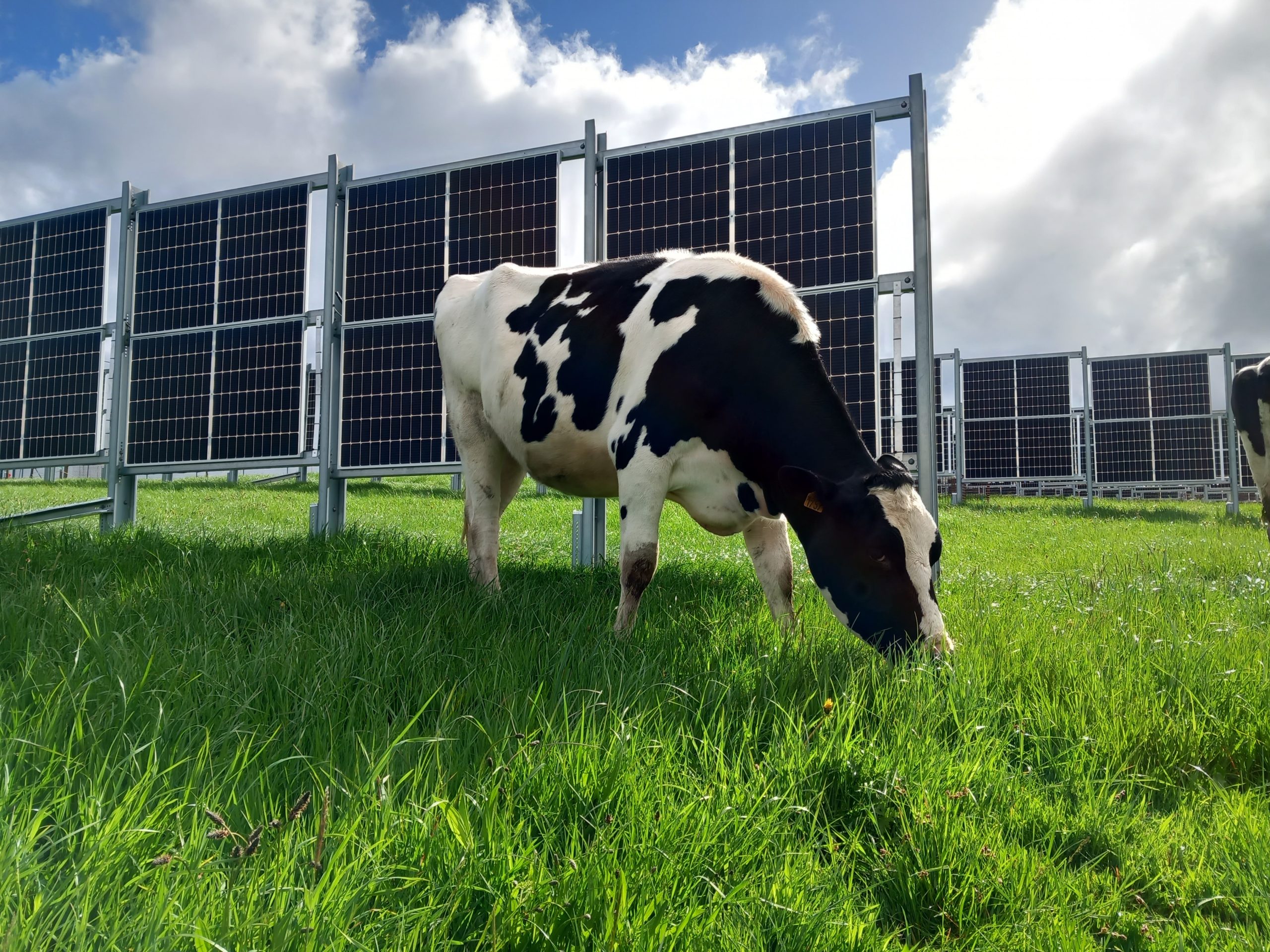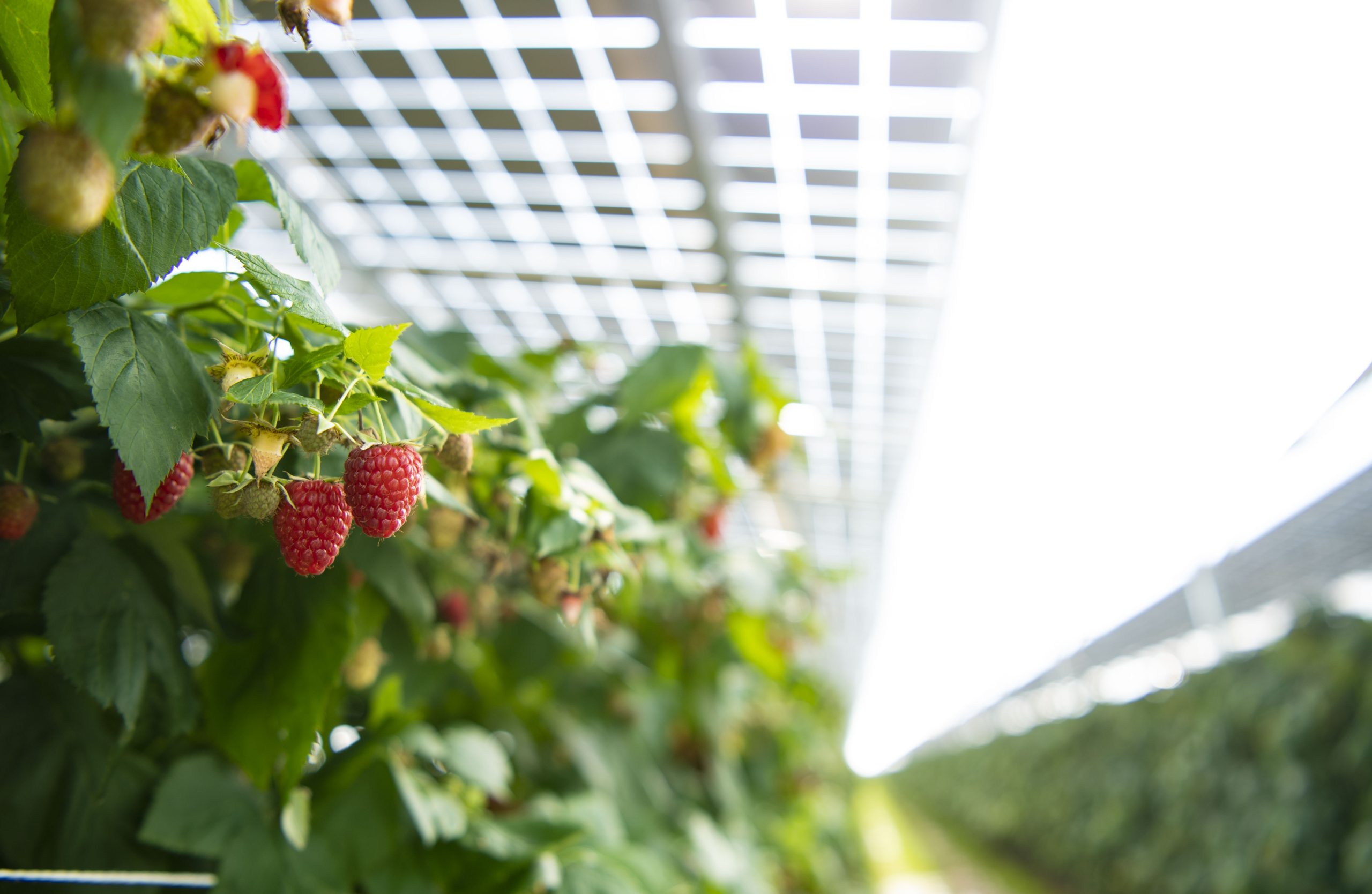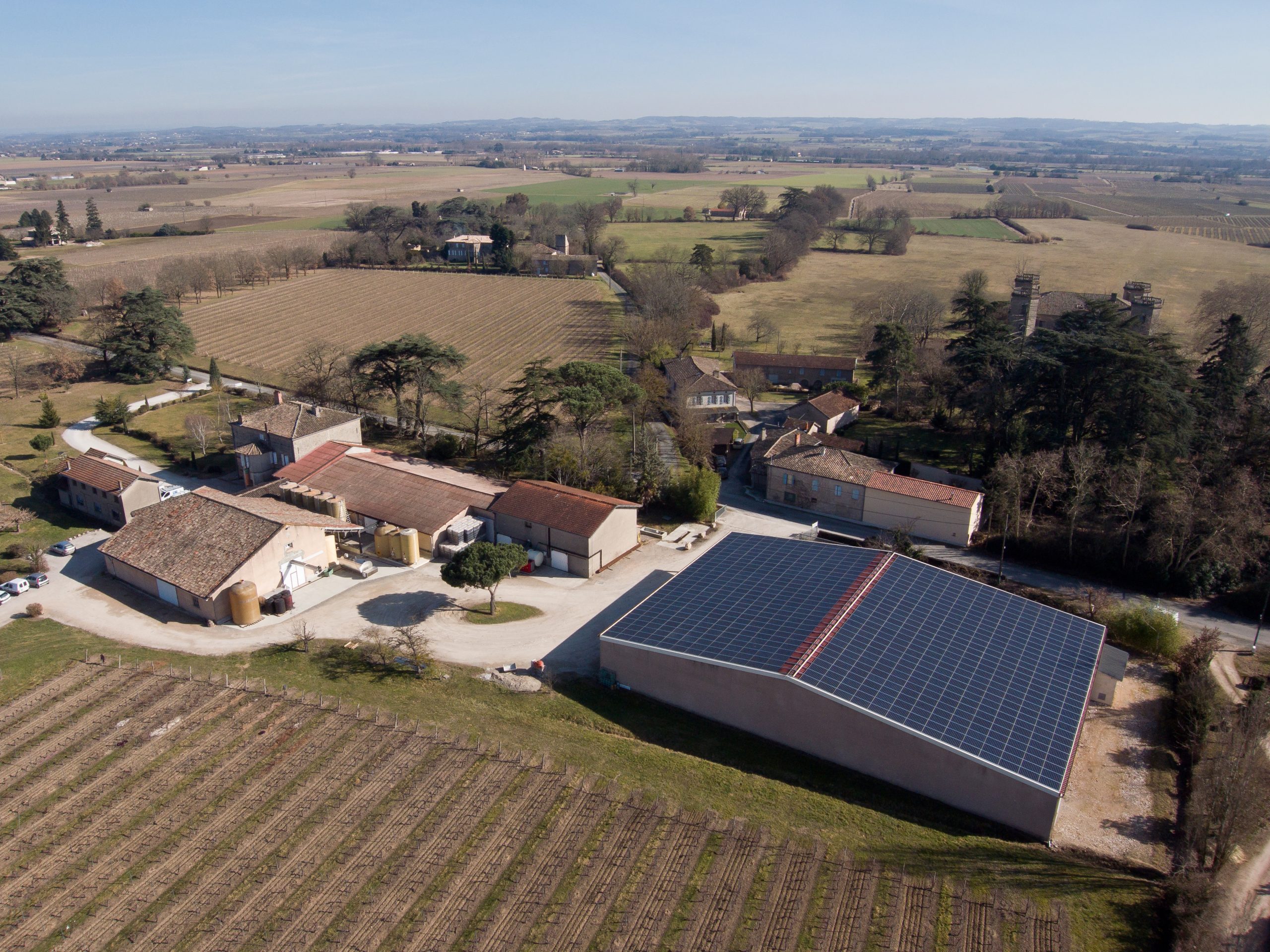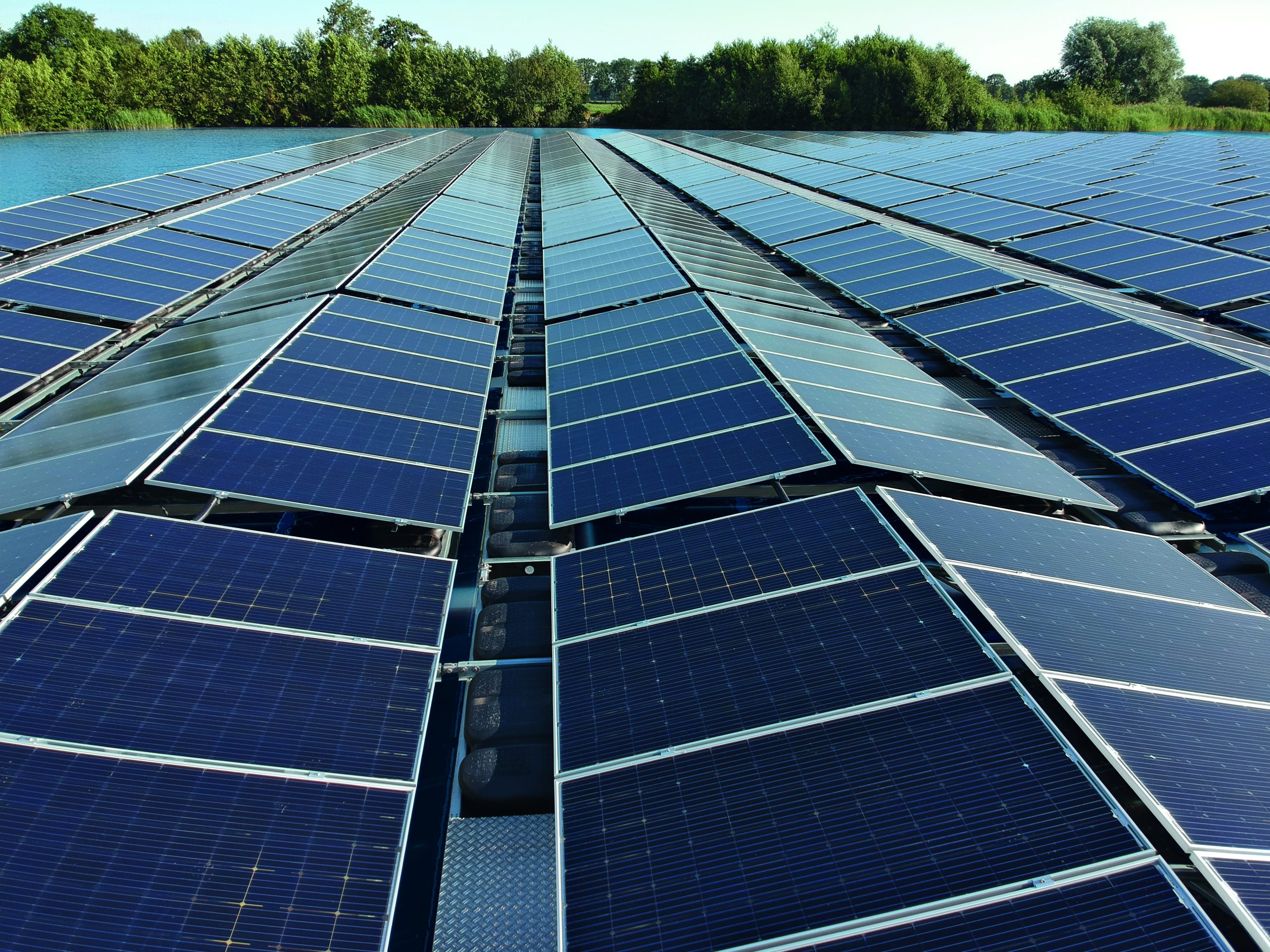Agrisolar refers to the practice of combining agriculture and solar energy generation on the same land. Sustainable agricultural practices aim to improve environmental and socio-economic benefits for the farm, and its territory.

The agriculture sector is facing a multitude of challenges, from the climate crisis to volatile energy prices. Extreme weather such as heat waves and drought are affecting crop yield and animal well-being, while increased costs are affecting the livelihoods of farmers.
Agrisolar offers the perfect solution. Solar installations coupled with agriculture practices can provide many benefits for the planet and both sectors.
These benefits include: improving crop yield; providing shade for farm animals; protecting and restoring local biodiversity and ecosystems; reducing water usage on farms; and offering extra revenue streams for farmers.

AGRISOLAR EXAMPLES

01
Agri-PV: A land-use concept that co-locates solar PV installations and energy generation, with agriculture and nature conservation practices that are dependent on sunlight. Agri-PV offers a wide-range of applications, adaptable to each production, site, and the local conditions. Agri-PV installations should guarantee that the agricultural activity is at least preserved, and at most improved.
02
Agricultural sheds with solar rooftops: Agricultural sheds are often used to store equipment, rear livestock, or for crop protection. Thanks to the installation of solar panels on the roof of these structures, solar energy can be generated without losing agricultural land. The solar panels can be mounted on fixed supports or designed to track the sun’s movement.


03
Integration of solar panels into irrigation systems: Some systems use floating solar panels or panels mounted on structures to generate energy, while supplying water to the crops. This solution enables a more efficient water usage by combining irrigation and solar energy production. Some studies estimate up to 42% reduction in evaporation on water bodies, when floating solar is deployed.
Agrisolar in numbers
Currently, 14 EU Member States have incorporated solar PV under their Common Agriculture Policy (CAP) Strategic Plans. These countries are Austria, Belgium, Bulgaria, Cyprus, Czech Republic, France, Germany, Ireland, Italy, Luxembourg, Malta, the Netherlands, Spain and Slovenia.
Energy bills represents up to 50% of farmers’
production costs in Europe, a cost that has increased
12 times over the last decade. Using solar energy for
irrigation can represent the best alternative to reduce
these energy costs.
Interested in joining SolarPower Europe?
AGRISOLAR
SolarPower Europe
Agrisolar Europe is an initiative by SolarPower Europe. To get to know more about us and solar power in general, please visit our website.
Stay tuned
Do you want to stay up to date about the exciting developments in Agrisolar? Register for our newsletter.